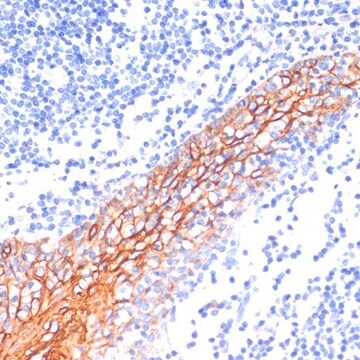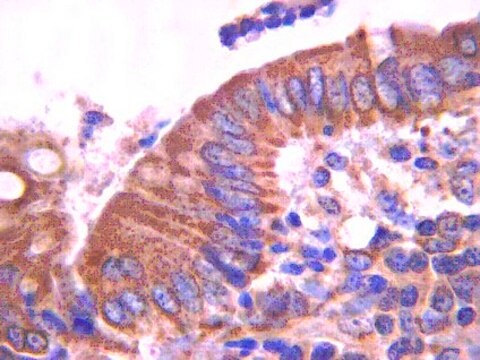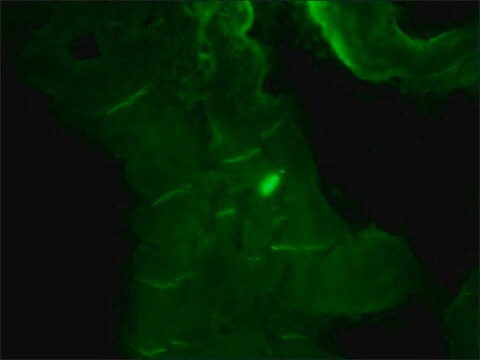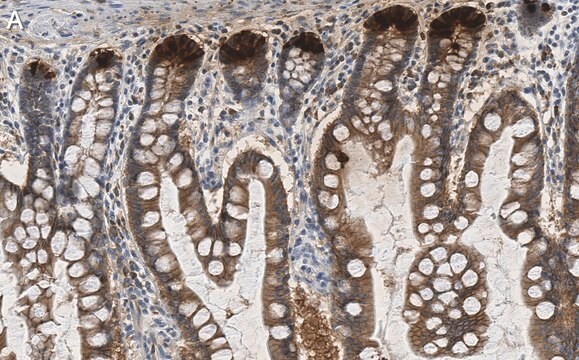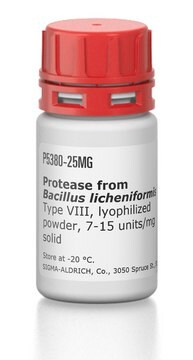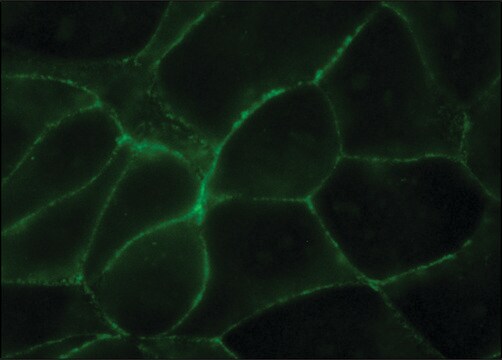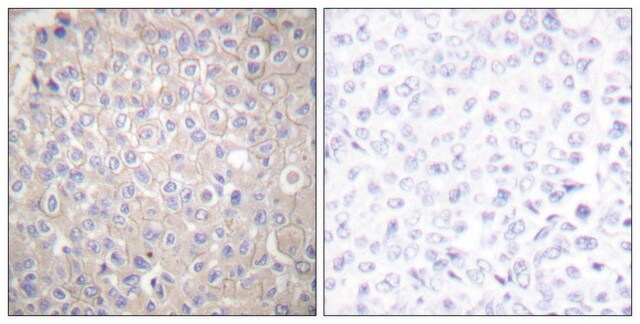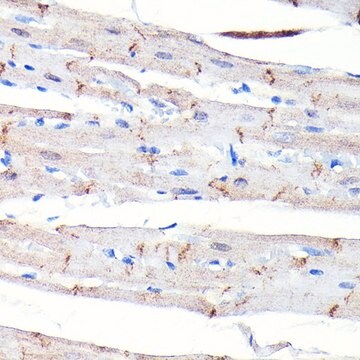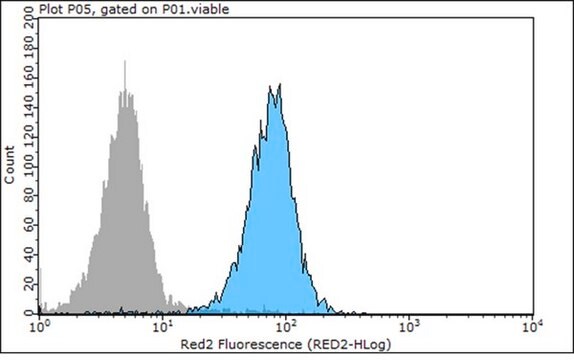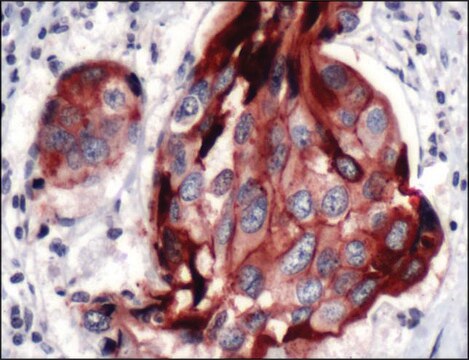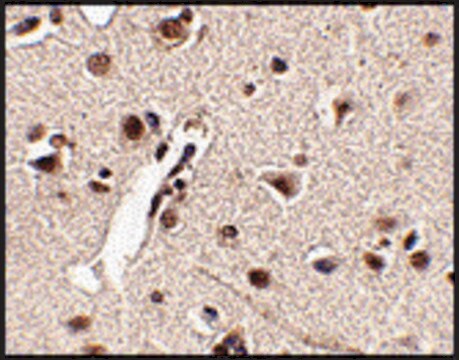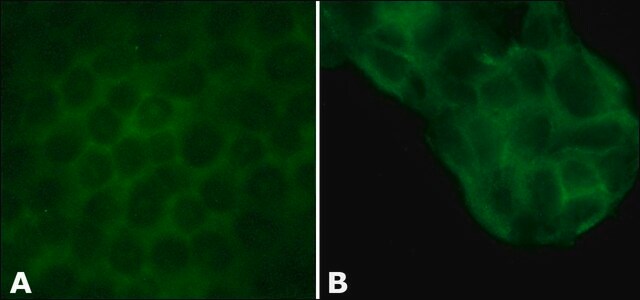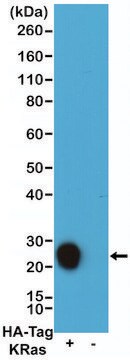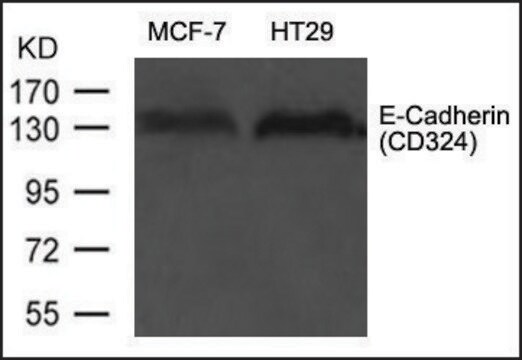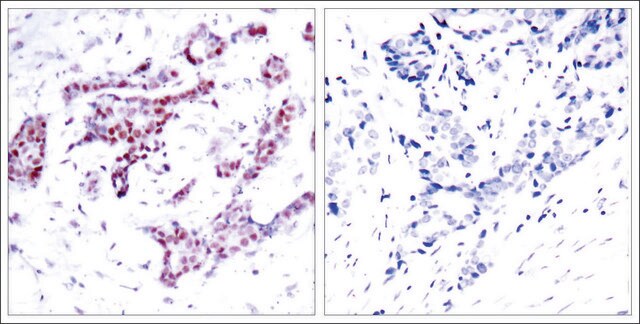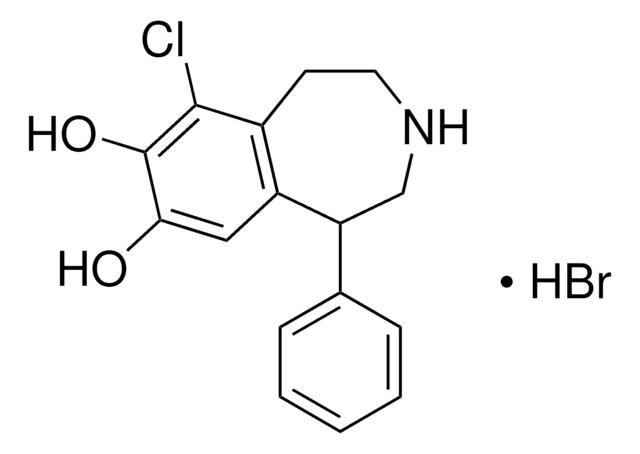Kluczowe dokumenty
U3254
Monoclonal Anti-Uvomorulin/E-Cadherin antibody produced in rat
clone DECMA-1, ascites fluid, buffered aqueous solution
Synonim(y):
Anti-E-Cadherin, Anti-LCAM
About This Item
Polecane produkty
pochodzenie biologiczne
rat
Poziom jakości
białko sprzężone
unconjugated
forma przeciwciała
ascites fluid
rodzaj przeciwciała
primary antibodies
klon
DECMA-1, monoclonal
Formularz
buffered aqueous solution
zawiera
15 mM sodium azide
reaktywność gatunkowa
bovine, human, canine, mouse
metody
immunohistochemistry (frozen sections): suitable
immunoprecipitation (IP): suitable
indirect immunofluorescence: 1:1,600 using cultured MDCK cells
microarray: suitable
western blot: suitable
izotyp
IgG1
numer dostępu UniProt
Warunki transportu
dry ice
temp. przechowywania
−20°C
docelowa modyfikacja potranslacyjna
unmodified
informacje o genach
human ... CDH1(999)
mouse ... Cdh1(12550)
Opis ogólny
Specyficzność
Immunogen
Zastosowanie
Oświadczenie o zrzeczeniu się odpowiedzialności
Nie możesz znaleźć właściwego produktu?
Wypróbuj nasz Narzędzie selektora produktów.
polecane
Kod klasy składowania
12 - Non Combustible Liquids
Klasa zagrożenia wodnego (WGK)
nwg
Temperatura zapłonu (°F)
Not applicable
Temperatura zapłonu (°C)
Not applicable
Wybierz jedną z najnowszych wersji:
Masz już ten produkt?
Dokumenty związane z niedawno zakupionymi produktami zostały zamieszczone w Bibliotece dokumentów.
Klienci oglądali również te produkty
Nasz zespół naukowców ma doświadczenie we wszystkich obszarach badań, w tym w naukach przyrodniczych, materiałoznawstwie, syntezie chemicznej, chromatografii, analityce i wielu innych dziedzinach.
Skontaktuj się z zespołem ds. pomocy technicznej